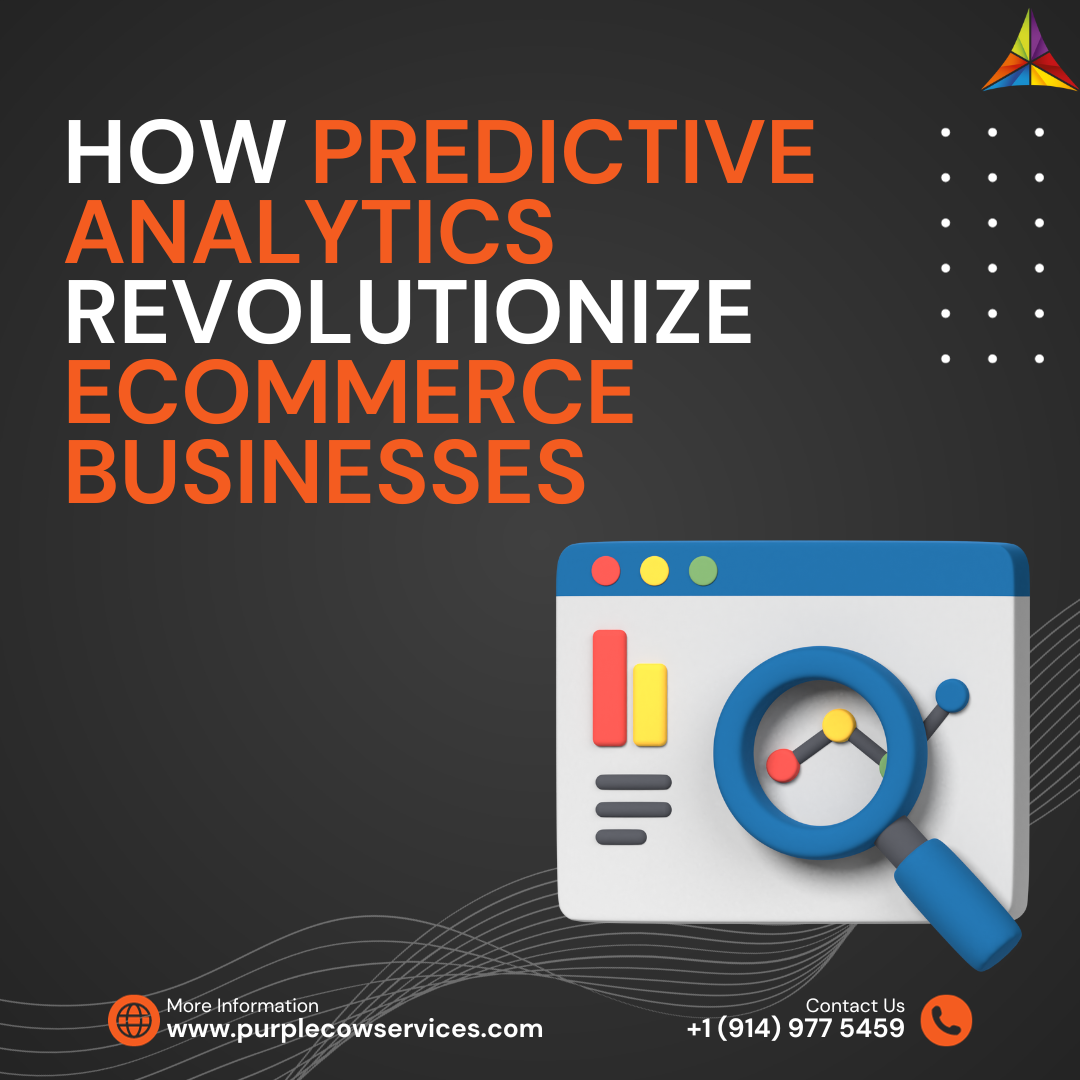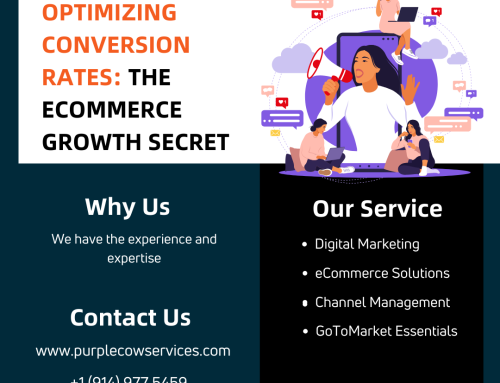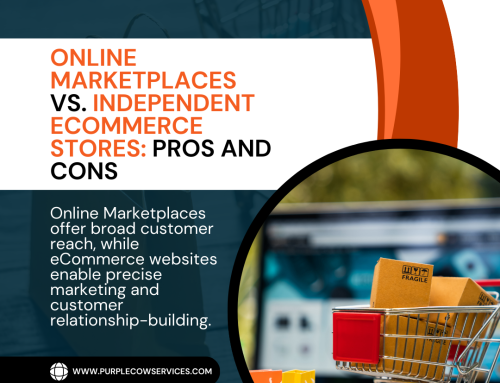As eCommerce continues to dominate the retail landscape, businesses are on an eternal quest for the perfect formula to boost sales, enhance customer satisfaction, and stay ahead of the competition.
Share This Story, Choose Your Platform!
In this digital age, the secret weapon in this quest is predictive analytics. Imagine having a crystal ball that could foresee what products your customers will crave, when they’ll make a purchase, and how to keep them coming back for more. That’s the magic of predictive analytics, and in this blog post, we’ll delve deep into how it’s reshaping the future of eCommerce businesses.
What is Predictive Analytics
Before we dive into its remarkable applications, let’s demystify predictive analytics. At its core, predictive analytics is the art of using historical and real-time data, statistical algorithms, and machine learning techniques to forecast future events or trends. In the eCommerce realm, this translates to predicting customer behavior, sales patterns, and market trends.
The beauty of predictive analytics is that it doesn’t rely on hunches or guesswork. Instead, it takes a data-driven approach, analyzing vast datasets to uncover hidden insights and provide actionable recommendations. This data-driven superpower empowers eCommerce businesses to make informed decisions, optimize their operations, and ultimately boost their bottom line.
Anticipating Customer Desires
Picture this scenario: a customer visits your online store, browses through various product categories, adds items to their cart, and perhaps even begins the checkout process. But just before hitting that “Buy Now” button, they abandon their cart and vanish into the digital ether. This is a common conundrum for eCommerce businesses. However, predictive analytics steps in as a real-time detective, analyzing customer behavior to predict and prevent cart abandonment.
By examining factors like browsing history, purchase patterns, and even mouse movements on your website, predictive analytics can identify when a customer is likely to abandon their cart. Armed with this knowledge, businesses can take proactive measures, such as sending timely email reminders, offering discounts, or improving website navigation to close the sale successfully.
But predictive analytics doesn’t stop at reducing cart abandonment. It also empowers businesses to anticipate customer desires and preferences accurately. By analyzing historical data on past purchases, wish lists, and product reviews, eCommerce platforms can provide personalized product recommendations. These tailored suggestions enhance the shopping experience, leading to increased sales and customer satisfaction.
Inventory Optimization
In the fast-paced world of eCommerce, managing inventory efficiently is a delicate balancing act. Stock too much of a product, and you tie up capital and warehouse space unnecessarily. Stock too little, and you risk frustrating customers with out-of-stock items. Predictive analytics swoops in as the inventory virtuoso, offering a solution that keeps your supply chain running smoothly.
Through historical sales data, seasonality trends, and market demand forecasts, predictive analytics helps eCommerce businesses optimize their inventory levels. This means having just the right amount of stock on hand to meet customer demand without excess. In addition to cost savings, inventory optimization prevents stockouts, ensuring customers can purchase what they want when they want it.
Furthermore, predictive analytics doesn’t only focus on inventory levels but also on product assortment. By analyzing customer preferences, search trends, and competitor offerings, it guides businesses in curating the ideal product mix. This ensures that your eCommerce store always showcases the most appealing and relevant items, enticing customers to explore further and make purchases.
Dynamic Pricing Strategies
Pricing strategies can make or break an eCommerce business. Setting prices too high may deter price-sensitive customers, while pricing too low may hurt profitability. Predictive analytics steps in as the pricing wizard, helping businesses strike the perfect balance through dynamic pricing strategies.
Dynamic pricing is the practice of adjusting prices in real-time based on various factors such as demand, competitor pricing, and inventory levels. Predictive analytics plays a pivotal role by analyzing these variables and providing insights to set optimal prices. For example, during peak shopping hours or high demand periods, prices may be adjusted slightly upwards to capitalize on increased willingness to pay.
On the flip side, during slow periods or when competing with aggressive pricing from rivals, dynamic pricing can lower prices to attract budget-conscious shoppers. This flexible approach ensures that eCommerce businesses remain competitive while maximizing revenue.
Additionally, predictive analytics helps identify the price elasticity of products, revealing which items are more sensitive to price changes. Armed with this knowledge, businesses can strategically apply discounts or promotions to boost sales of specific products without harming overall profitability.
Targeted Marketing Campaigns
In the vast digital landscape, eCommerce businesses are constantly vying for customers’ attention. With countless online distractions, it’s essential to deliver marketing campaigns that cut through the noise and resonate with the target audience. Predictive analytics serves as the marketing maestro, orchestrating campaigns that hit the right notes.
By analyzing customer data and behavior, predictive analytics enables businesses to create highly targeted marketing campaigns. This means delivering the right message, to the right person, at the right time. For instance, if a customer has been browsing a particular category of products, predictive analytics can trigger personalized email recommendations related to those interests.
Moreover, predictive analytics optimizes marketing spend by identifying the most effective channels and strategies. It assesses which marketing channels provide the highest return on investment (ROI) and where resources should be allocated for maximum impact. Whether it’s social media advertising, email marketing, or pay-per-click campaigns, predictive analytics ensures that every marketing dollar is well spent.
Fraud Detection and Prevention
The digital realm offers convenience and accessibility, but it also presents challenges in the form of online fraud. Fraudulent transactions can have devastating financial consequences for eCommerce businesses. Predictive analytics serves as the vigilant guardian, protecting businesses against fraudulent activities.
Through advanced fraud detection algorithms, predictive analytics analyzes transaction data in real-time. It scrutinizes various factors such as transaction frequency, location, purchase history, and payment methods to identify suspicious activities. When a potentially fraudulent transaction is detected, the system can trigger alerts or temporarily suspend the transaction for manual review.
Additionally, predictive analytics evolves alongside fraudsters, continuously adapting to emerging fraud patterns. By staying one step ahead, it ensures that eCommerce businesses can maintain a secure and trustworthy shopping environment for their customers.
Enhanced Customer Support
In the world of eCommerce, exceptional customer support is a cornerstone of success. However, providing personalized and efficient support to a large customer base can be challenging. Predictive analytics acts as the customer support virtuoso, streamlining and enhancing the support experience.
By analyzing customer interactions, predictive analytics can anticipate customer inquiries and issues. For example, if a customer encounters difficulties with a product, the system can predict the need for assistance and proactively reach out with solutions or guidance. This proactive approach not only resolves issues swiftly but also leaves customers with a positive impression of your eCommerce brand.
Furthermore, predictive analytics assists in prioritizing support requests based on urgency and complexity. It ensures that critical issues receive immediate attention while routing routine inquiries to automated responses or lower-priority queues. This intelligent allocation of resources optimizes the efficiency of customer support teams.
Streamlined Supply Chain Management
The supply chain is the backbone of any eCommerce operation, and its efficiency directly impacts customer satisfaction. Predictive analytics steps in as the supply chain maestro, orchestrating a well-optimized and responsive supply chain ecosystem.
One of the significant challenges in supply chain management is forecasting demand accurately. Predictive analytics leverages historical sales data, market trends, and external factors such as weather patterns or economic indicators to refine demand forecasts. This ensures that eCommerce businesses can stock the right products in the right quantities, minimizing excess inventory or stockouts.
Moreover, predictive analytics enhances logistics and delivery processes. It considers variables like shipping times, carrier performance, and customer preferences to provide accurate delivery estimates. This transparency builds trust with customers and sets clear expectations regarding order arrival times.
A/B Testing and Product Optimization
A/B testing is a cornerstone of eCommerce optimization, allowing businesses to experiment with changes to their website or product offerings. Predictive analytics takes A/B testing to the next level by providing data-driven insights and recommendations for product optimization.
By analyzing the results of A/B tests, predictive analytics can pinpoint which changes have the most significant impact on user behavior, conversion rates, or sales. It offers valuable insights into which product features, design elements, or marketing messages resonate most effectively with customers.
Furthermore, predictive analytics can guide product development by analyzing customer feedback and reviews. By identifying recurring themes or issues, businesses can refine their products to better meet customer expectations. This iterative improvement process ensures that eCommerce businesses continue to deliver products that align with market demands.
Inventory Forecasting and Demand Planning
In the world of eCommerce, staying ahead of demand is a constant challenge. Predictive analytics becomes the eCommerce business’s strategic partner in forecasting inventory needs and demand planning.
Through historical sales data, market trends, and seasonality factors, predictive analytics can generate accurate inventory forecasts. This means eCommerce businesses can proactively order and stock products to meet anticipated demand, minimizing the risk of stockouts or overstocking.
Moreover, demand planning with predictive analytics enables businesses to align their inventory with customer preferences and trends. By analyzing customer behavior and purchasing patterns, it identifies which products are likely to experience increased demand in the future. This proactive approach ensures that eCommerce businesses can capitalize on emerging trends and cater to evolving customer tastes.
Customer Retention and Loyalty
In the competitive eCommerce landscape, acquiring new customers is essential, but retaining existing ones is equally vital. Predictive analytics plays a central role in customer retention and loyalty strategies.
By analyzing customer data, predictive analytics can identify factors that contribute to customer churn or attrition. It detects patterns such as declining purchase frequency, reduced engagement, or dissatisfaction signals. Armed with this knowledge, eCommerce businesses can implement targeted retention strategies.
Predictive analytics can recommend personalized incentives or offers to win back at-risk customers. Whether it’s a tailored discount, exclusive access, or personalized content recommendations, these initiatives rekindle customer loyalty and prevent churn.
Additionally, predictive analytics guides the creation of loyalty programs that resonate with customers. By analyzing customer preferences and behaviors, it suggests program features that offer genuine value. These loyalty programs foster emotional connections between customers and brands, resulting in increased customer lifetime value and positive word-of-mouth marketing.
Conclusion
Predictive analytics is the compass that guides eCommerce businesses through the uncharted waters of digital commerce. Its ability to anticipate customer desires, optimize inventory and pricing, enhance marketing strategies, detect fraud, streamline customer support, and elevate supply chain management makes it an indispensable tool.
As eCommerce businesses embrace predictive analytics, they not only survive but thrive in a competitive landscape. It’s not about predicting the future; it’s about shaping it. With predictive analytics as their ally, eCommerce businesses can chart a course towards sustainable growth, exceptional customer experiences, and enduring success. So, are you ready to unlock the potential of predictive analytics and reshape your eCommerce future?
Revolutionize Your eCommerce Success with Purple Cow‘s Predictive Analytics Services! Unlock the power of data-driven decision-making, boost sales, and enhance customer satisfaction. Our experts harness predictive analytics to optimize inventory, pricing, marketing, and more. Stay ahead in the competitive eCommerce landscape with actionable insights. Experience growth and transformation like never before. Join Purple Cow and reshape your eCommerce future today!
Share This Story, Choose Your Platform!
In This Blog:
- What is Predictive Analytics
- Anticipating Customer Desires
- Inventory Optimization
- Dynamic Pricing Strategies
- Targeted Marketing Campaigns
- Fraud Detection and Prevention
- Enhanced Customer Support
- Streamlined Supply Chain Management
- A/B Testing and Product Optimization
- Inventory Forecasting and Demand Planning
- Customer Retention and Loyalty
- Conclusion

















